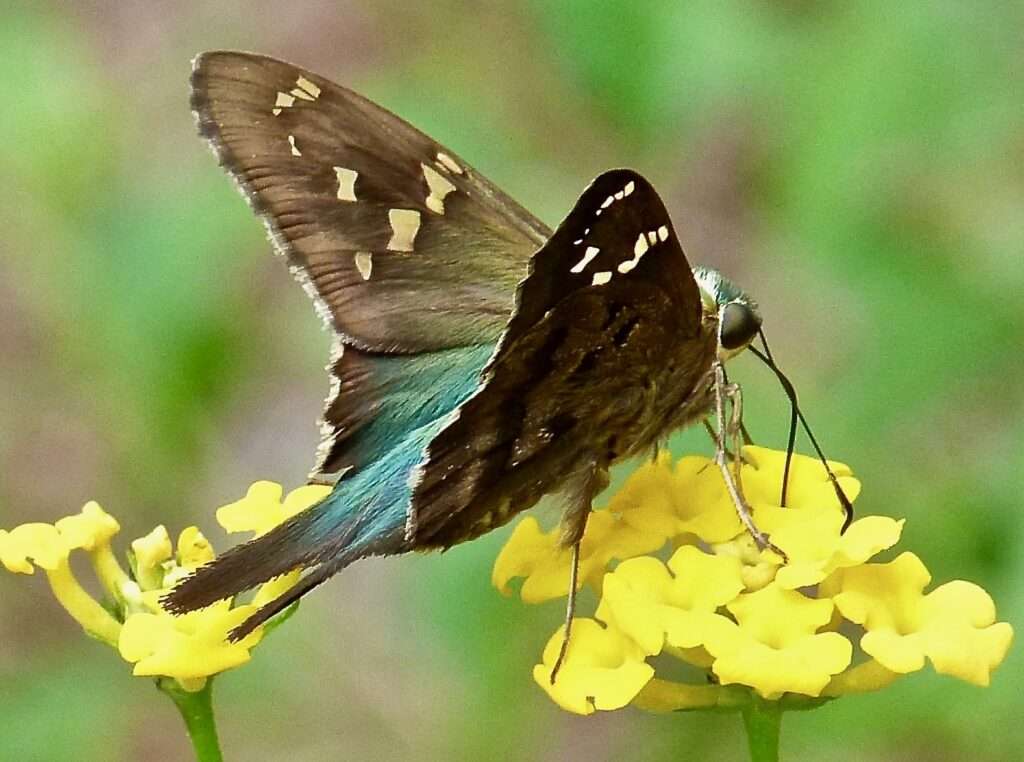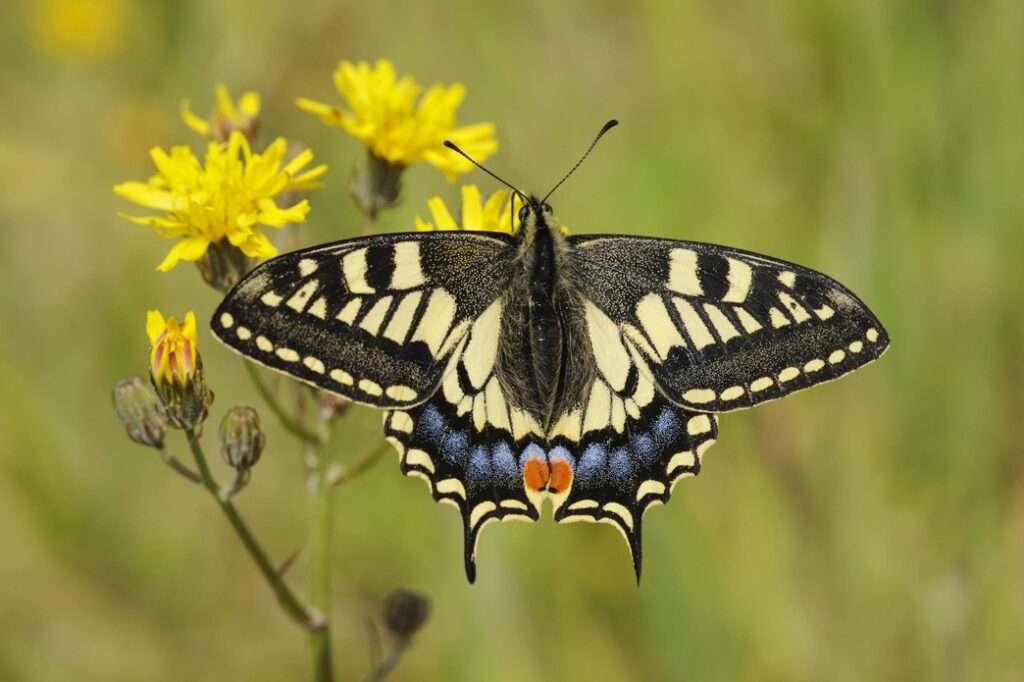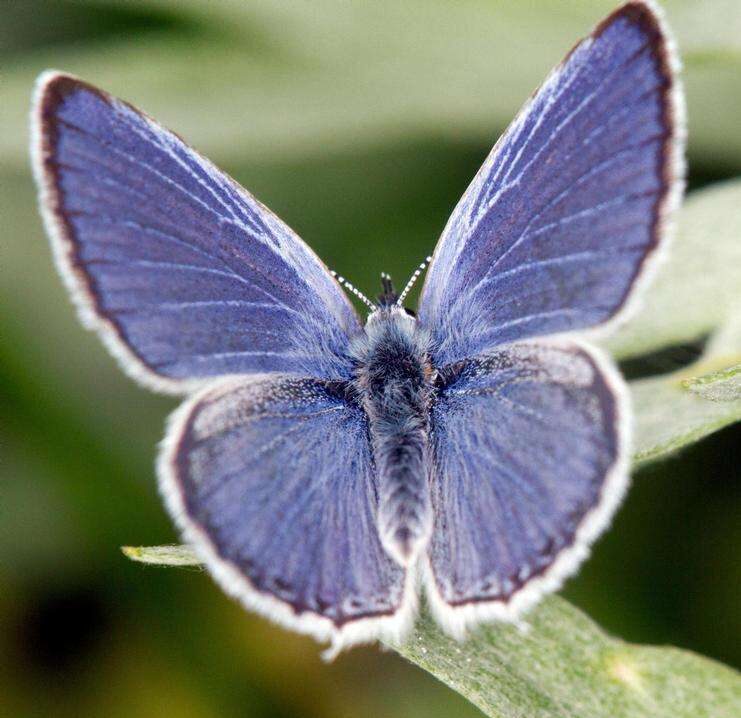
The long-tailed skipper (Urbanus proteus), a spread-winged skipper butterfly, can be found. Long-term frost-free environments are inhospitable to it.
Amazing Facts
- The butterfly U. p. domingo has a subspecies that is distributed across the West Indies and the Bahamas, however they are hard to tell apart because they only differ in a few decreased white markings.
- The larva of this species is known locally as the “bean leafroller” because it is thought to be a problem in southern US crops, primarily beans.
- The Florida predatory stink bug, fly parasitoids, and wasp are the species’ natural predators.
- Up to 50% of the population of caterpillars are frequently wiped out during the autumn by the nuclear polyhedrosis virus (NPV).
Appearance
The broad-headed, hairy body of long-tailed skippers has tufts of hair at the base of the antennae, and they have long tails. These hairy butterflies have wingspan measurements of 4 to 5.4 cm. Urbanus proteus’s upper side is dark brown with lighter brown patches. The top of the wing bases, which are the parts of the wing linked to the body, are an irridescent green colour. The butterflies’ undersides are a lighter shade of brown with dark bands and dots.
Yellowish green larvae have a black stripe running down the dorsal side of their bodies. The side stripes are yellow and orange/red, while the head is maroon and black. An orange or yellow patch is also seen on each side of the reddish-black skull. This species’ pupa is reddish-brown in color and is dusted with a waxy, white powder.

Diet
Adult butterflies are not attracted to any particular plants. The butterfly will pause regularly as long as there is a flowering plant nearby that has nectar.
Leguminosae and Fabacceae are the hosts for the larvae. Pisum, Desmodium, Bauhinia, cultivated beans, and other viney plants are a few instances of common larval plants.
Predators
There are some wasp and stink bug species that feed on larvae.
Habitat
The range of the Urbanus proteus extends from South America’s Argentina, through Central America, the West Indies, and up to the southern regions of North America. These butterflies can be found in a variety of settings, such as shady areas, forest margins, dunes along the coast, and even residential gardens. Because of the chilly temperatures, they cannot be found at high elevations or altitudes.
Why not keep it as a pet?
These skippers differ from other butterflies in that they have flimsy bodies and wings. Because of this and their brief lifespan, it is uncommonly recommended to keep them as pets.
Table





